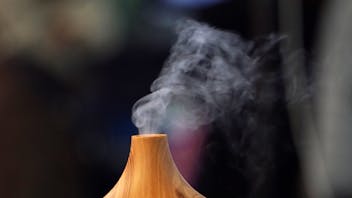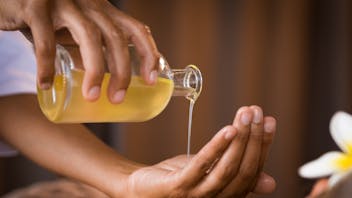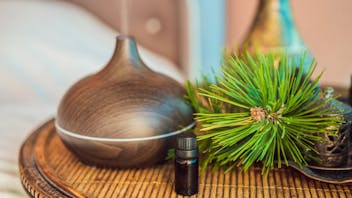Product Overview
Our Blue Mallee Eucalyptus essential oil has a strong, sweet-camphoraceous aroma with a fresh, cooling effect. Of all the commercially harvested Eucalyptus trees sought for their elevated cineole content, the Blue Mallees contain one of the highest percentages – typically 88 to 92%.[1]
Eucalyptus polybractea is one of the highest essential oil-yielding Eucalyptus species,[2] growing extensively in low rainfall areas of New South Wales and Victoria, Australia. This species is a typical 'mallee' – dwarf in size and having several (poly) stems (bractea) growing up from the main rootstock; its leaves have a dull grayish blue appearance.[3]
For hundreds of years, the Aborigines of Australia have used the leaves of Eucalyptus for various incense and skincare applications. Like other types of Eucalyptus, the species E. polybractea is particularly suited for diffusion into the air,[4] outdoor sprays, joint and muscle massage, chest rubs, foot lotions, and oily scalp and skin preparations. Although its ketone content suggests potential effects, Eucalyptus polybractea presents minimal danger of toxicity when used with caution after appropriate dilution and when combined with other applicable essential oils.[5] Please see Safety Considerations.
Please Note: Because of Blue Mallee Eucalyptus oil’s high cineole content, Eucalyptus – Narrow Leaf is preferred for children and sensitive individuals. The primary constituent in Eucalyptus Narrow Leaf (E. radiata) is 1,8-cineole, a potent and volatile oxide. The safety issue with E. ploybractea is due to the other highly volatile constituents that intensify 1,8-cineole, whereas E. radiata has percentages of moderately volatile and extremely gentle constituents that mediate the intensity of 1,8-cineole.
1 Tisserand, Robert and Rodney Young. Essential Oil Safety, 2nd ed., 2014, p. 273.
2 Guenther, Ernest. The Essential Oils, Vol. IV, 1950, p. 443.
3 Ibid, p. 453.
4 Schnaubelt, Kurt. Advanced Aromatherapy, 1998, p. 68.
5 Ibid, pp. 43-5.



